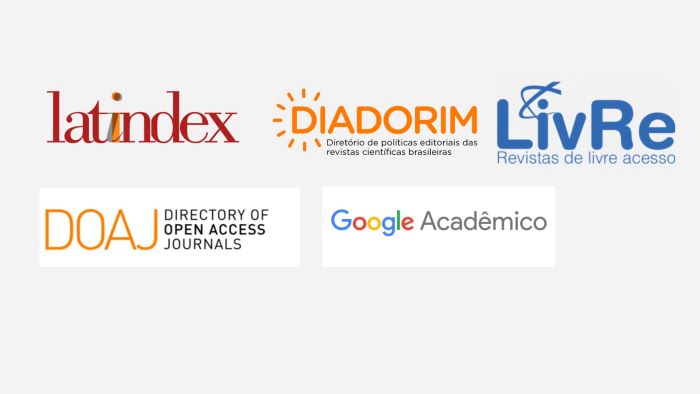Distance education and teacher training in geography: a look from the geography of education
DOI:
https://doi.org/10.5418/ra2024.v20i41.17861Keywords:
Distance Education; Teacher Training; Geography of EducationAbstract
In this article, we analyze microdata from the 2022 Higher Education Census, with the aim of identifying the total number of courses in teacher training in geography in the EAD modality in Brazil, their spatial distribution and the profile of entrants and enrollees, seeking to problematize what this set of data can indicate the future of teacher training in geography in the country. The data indicate a growing expansion of the offer of distance learning courses, with the predominance of the private sector in managing this offer. From a profile point of view, it is not possible to indicate that teacher training courses in geography in the distance learning modality reach more vulnerable students. On the contrary, preliminary data indicate that such students are in greater numbers in courses offered in person and publicly. Regarding the spatialization of teacher training courses in geography, we observed a pattern of spatial concentration in private courses, both in distance learning and in-person modes, indicating that the logic of spatial distribution of these courses is based on a commercial perspective. The greatest spatial equity was found in the distribution of public face-to-face courses, which can be understood as a result of the process of internalization of higher education in Brazil.
Downloads
References
DE ALBUQUERQUE GAMA, Lívia Thaysa Santos et al. Monitoria acadêmica: uma experiência no Curso de Licenciatura em Geografia EaD/UFAL. Missões: Revista de Ciências Humanas e Sociais, v. 7, n. 1, 2021.
DE ALMEIDA, RICARDO SANTOS. A importância das ferramentas, recursos e mídias na formação continuada de tutores de Geografia na EaD. Revista Urutágua, n. 32, 2015.
DIAS, Simone Silva et al. O PERFIL DO ALUNO DE EAD. ESTUDO DE CASO DO CURSO DE LICENCIATURA EM GEOGRAFIA A DISTÃ ‚NCIA DA UAB/UNB. Revista Eletrônica: Tempo-Técnica-Território/Eletronic Magazine: Time-Technique-Territory, v. 1, n. 3, 2010. DOI: https://doi.org/10.26512/ciga.v1i3.15790
FIORI, Vivian. As condições dos cursos de licenciatura em Geografia no Brasil: uma análise territorial e de situação. 2013. Tese de Doutorado. Universidade de São Paulo.
GIOLO, Jaime. Educação a Distância no Brasil: a expansão vertiginosa. Revista Brasileira de Política e Administração da Educação, v. 34, n. 1, p. 73-97, 2018. DOI: https://doi.org/10.21573/vol34n12018.82465
GOMES, Marcus Vinicius; SERRA, Enio. Por que falar sobre Geografia da Educação. Giramundo, Rio de Janeiro, v. 6, n. 12, p. 7-21, 2019. DOI: https://doi.org/10.33025/grgcp2.v6i12.2757
HANSON-THIEM, C. Thinking through education: the geographies of contemporary educational restructuring. Progress in Human Geography. N. 33, 2009. DOI: https://doi.org/10.1177/0309132508093475
HOLLOWAY, Sarah L.; VALENTINE, Gill. Spatiality and the new social studies of childhood. Sociology, v. 34, n. 4, p. 763-783, 2000. DOI: https://doi.org/10.1017/S0038038500000468
KUČEROVÁ, S. R, HOLLOWAY, S. & ,JAHNKE, H. The Institutionalization of the Geography of Education: An International Perspective. Loughborough University. https://hdl.handle.net/2134/12681809.v1. 2020. DOI: https://doi.org/10.2478/jped-2020-0002
INEP. Censo do Ensino Superior. Brasília: INEP, 2022.
SANTOS, CATARINA DE ALMEIDA. Educação Superior a Distância no Brasil: democratização da oferta ou expansão do mercado. Revista Brasileira de Política e Administração da Educação, v. 34, n. 1, p. 167-188, 2018. DOI: https://doi.org/10.21573/vol34n12018.82470
SANTOS, M. O espaço do cidadão. 2ª edição. São Paulo: Nobel, 1993.
SANTOS, Milton; SILVEIRA, Maria Laura. O Brasil: território e sociedade no início do século XXI. Rio de Janeiro: Bertand Brasil, 2008.
SANTOS, Milton; SILVEIRA, María Laura. O ensino superior público e particular e o território brasileiro. 2000.
TAYLOR, C. Towards a geography of education, Oxford Review of Education, 35:5, 651-669, 2009. DOI: https://doi.org/10.1080/03054980903216358
TERAMATSU, Gustavo; STRAFORINI, Rafael. Do Enem ao Sisu: cartografia da interiorização do acesso à educação superior no Brasil. 2022. DOI: https://doi.org/10.38116/978-65-5635-030-1/capitulo3
Downloads
Published
How to Cite
Issue
Section
License
Autores que publicam nesta revista concordam com os seguintes termos:Autores mantêm os direitos autorais e concedem à revista o direito de primeira publicação, com o trabalho simultaneamente licenciado sob a Creative Commons Atribuição-NãoComercial-CompartilhaIgual 3.0 Brasil que permitindo o compartilhamento do trabalho com reconhecimento da autoria do trabalho e publicação inicial nesta revista.
Autores têm autorização para assumir contratos adicionais separadamente, para distribuição não exclusiva da versão do trabalho publicada nesta revista (ex.: publicar em repositório institucional ou como capítulo de livro), com reconhecimento de autoria e publicação inicial nesta revista.
Autores têm permissão e são estimulados a publicar e distribuir seu trabalho online (ex.: em repositórios institucionais ou na sua página pessoal) a qualquer ponto antes ou durante o processo editorial, já que isso pode gerar alterações produtivas, bem como aumentar o impacto e a citação do trabalho publicado (Veja O Efeito do Acesso Livre em http://opcit.eprints.org/oacitation-biblio.html.)
Authors who publish with this journal agree to the following terms:
Authors retain copyrights and grant the Journal the right of first publication with the work simultaneously licensed under a Creative Commons Atribuição-NãoComercial-CompartilhaIgual 3.0 Brasil that allows others to share the work with an acknowledgement of the work's authorship and initial publication in this Journal.
Authors are permitted to enter into separate, additional contractual arrangements for the non-exclusive distribution of the Journal's published version of the work (e.g., post it to an institutional repository or in a book chapter), with an acknowledgement of authorship and initial publication in this journal.
Authors are permitted and encouraged to publish and share their work online (e.g., in institutional repositories or on their website) prior to and during the submission process, as it can lead to productive exchanges, as well as increase the impact and citation of published work (See The Effect of Open Access - http://opcit.eprints.org/oacitation-biblio.html.)




